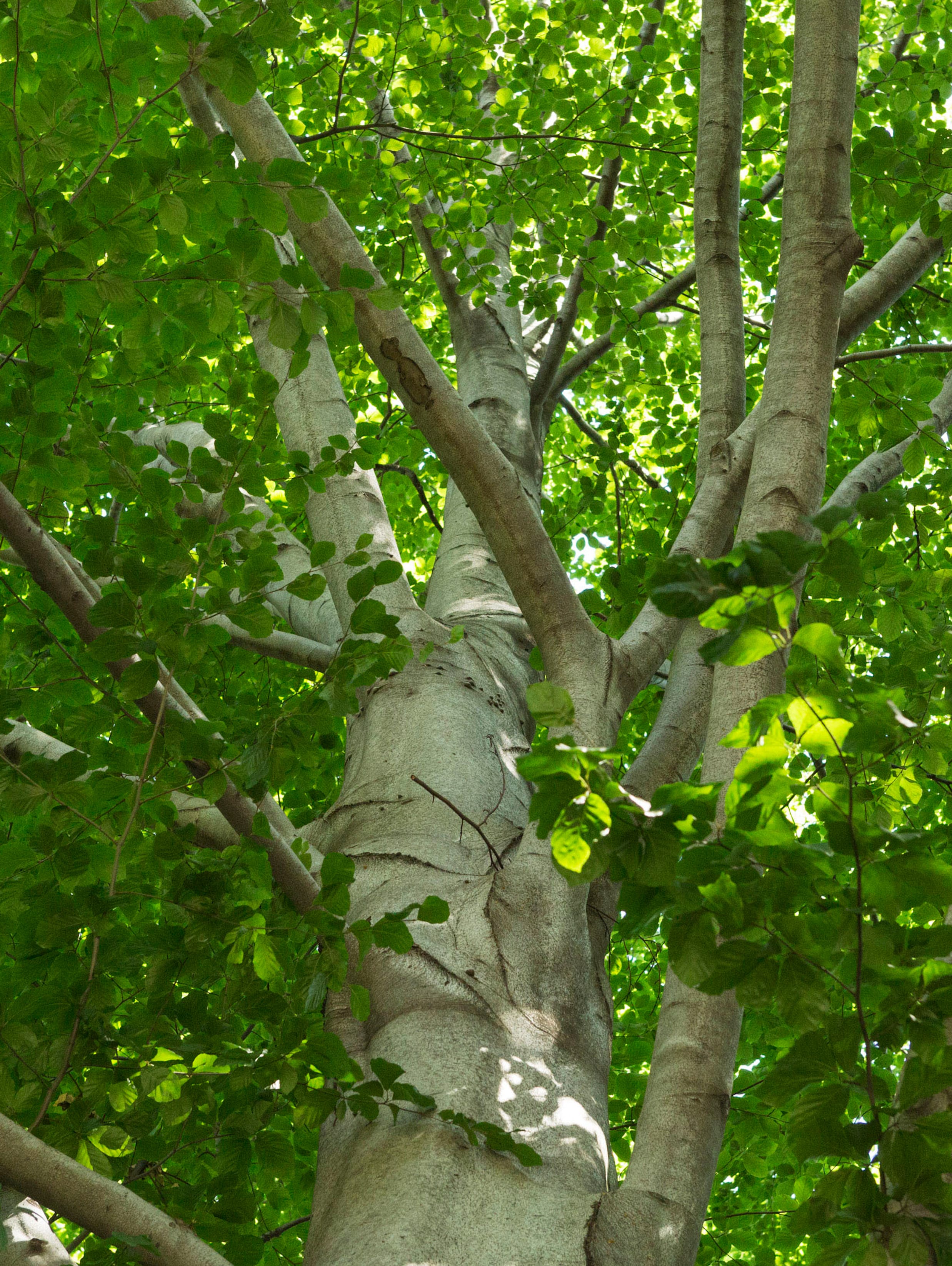European Beech

Easily confused with the American beech, the European beech can be distinguished by a lack of teeth on the edge of its leaves. The European beech is highly variable and numerous cultivars can be seen in Central Park. The European beech thrives in urban park settings, whereas the native American beech does not. European beech fruits are spiky and grow only in singles, while American beech fruit may grow alone or in pairs, and even in triplicate. In spring, the leaves of the copper or purple beech glow in brilliant shades of crimson and wine. Don't miss the beautiful golden color of the European beech in fall.
-

Leaves
Alternate arrangement, silky fringed with ciliate (group of hair-like organisms); five to nine pairs of leaf veins; golden bronze in fall -

Fruit
Triangular nut enclosed in a spiky involucre (small rosette of irregular leaves), found singly -

Flower
Bloom in April or early May -

Bark
Light gray, wrinkled appearance yet smooth to the touch, olive brown stems







